
Topics covered included expanding technologies to the type 2 diabetes population (90% of people with diabetes), GLP-1 drugs, automation, broadening user bases and more. The usual big-hitters stepped up to the plate with more enthusiasm around their leading products, while relative newcomers also entered the fray as well.
BTIG analysts Marie Thibault and Sam Eiber last year said the diabetes technology field was a “high-priority” space for medtech investors. (Here’s a link to last year’s roundup). They continue to present optimism around the space after this year’s edition.
“The diabetes tech segment of medtech continues to evolve rapidly, with new user populations, payor coverage, and competitive dynamics giving investors numerous catalysts to track,” the analysts wrote. “We remain bullish on the ability for diabetes tech sales growth rates to be well above most medtech peers.”
What news shared at ADA 2024 led to this even more bullish outlook from the analysts? Here are some of the standout stories from the four-day event:
Abbott has high hopes for the future following latest sensor innovations

With the recent FDA clearance of two over-the-counter sensors following significant automated insulin pump integrations, 2024 has been full of good news for the company. Scoggins expects the good times to continue to roll.
“2024 is shaping up to be an exciting year, a good year,” Scoggins said. “The excitement for us, at least in the U.S., is that we’re just pushing deeper and deeper into this really big, underserved patient population of people with type 2 diabetes.
Scoggins stressed the company’s work on the type 2 population and also discussed the potential of automated insulin delivery integrations and the broadening of the company’s user base.
Additionally, Scoggins provided an in-depth look at the company’s acquisition of Bigfoot Biomedical and its smart insulin management system.
Insulet looks to bring Omnipod 5 to type 2 population with data to back it up
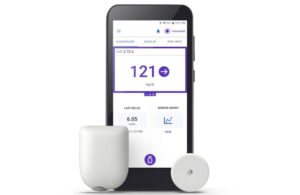
The company recently submitted its study results to the FDA for an expansion of Omnipod 5’s indications for use. It hopes to garner clearance for the type 2 diabetes population and launch in the U.S. in early 2025.
Insulet’s study evaluated the impact of automated insulin delivery in a diverse group of people with type 2 diabetes who require insulin. SECURE-T2D demonstrated glycemic improvements with the use of Omnipod 5 compared to prior treatment of insulin injections or pump therapy in adults with type 2 diabetes.
Outcomes included significant reductions in HbA1c, time in hyperglycemia and total daily insulin dose. Insulet also reported a large improvement in time in range without increasing time in hypoglycemia. Finally, the company also said the study demonstrated a clinically meaningful improvement in diabetes distress.
“These data demonstrate that simple, easy-to-use AID technology, such as Omnipod 5, can be adopted by a broad population of people with type 2 diabetes and improve their lives,” said Dr. Trang Ly, Insulet SVP and medical director.
Medtronic’s automated insulin delivery system reduces diabetes burden
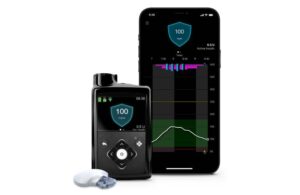
(DDB recently spoke to Lou Lintereur, the chief engineer for the MiniMed 670G and MiniMed 780G, about how the company developed its automated insulin delivery systems.)
The data showed how the system addresses hyperglycemia and nighttime burden to tackle the unique burdens and challenges of diabetes. Those include managing highs and meal-time management or carb-counting. The company said its latest data also mirrors outcomes across a wide-ranging patient population.
Medtronic wanted to take on hyperglycemia, or high blood sugar, a significant unmet need, according to a news release. Hyperglycemia can lead to serious health problems, including adverse effects on memory, IQ, executive function and learning in children.
The company looked at diabetes burdens such as peak levels at certain times in the day and sleep interruptions during the night.
Dr. Robert Vigersky, chief medical officer, Medtronic Diabetes, said of the system: “It’s been an absolute gift for my patients who have struggled with stubborn highs throughout their diabetes journey.”
Senseonics outlines the steps ahead for its long-term implantable CGM

In April, the company received FDA integrated CGM (iCGM) designation, allowing the long-term implantable CGM to connect with insulin pumps as part of an automated insulin delivery system. Senseonics then submitted the 365-day sensor to the FDA for 510(k) clearance with that iCGM designation in May.
Brian Hansen, who took over as president of CGM for Ascensia, Senseonics’ exclusive commercial partner for Eversense, sat down with Drug Delivery Business News to outline what’s ahead for the companies as they prepare the long-term CGM for launch.
Topics discussed included the advancing pipeline of implantable CGM technology at Senseonics, the immediate priorities on the commercial front and the significance of that iCGM designation.
Sequel Med Tech shows off new, unique automated insulin delivery system
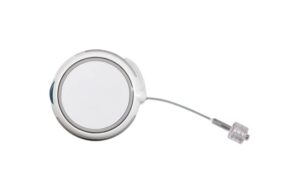
twiist, powered by the Tidepool Loop automated insulin delivery algorithm, directly measures the volume and flow of insulin delivered with every microdose. It offers the capability and flexibility to address each patient’s individual dosing needs. twiist received clearance for people ages six and up with type 1 diabetes.
Sequel’s device utilizes a unique pumping mechanism, using sound waves that measure each pulse of insulin. This enables precision and helps understand exactly how much insulin the patient receives in a dose.
CEO Dr. Alan Lotvin co-founded Sequel along with Dean Kamen, who commercialized the first wearable insulin pump for diabetes.
Speaking to Drug Delivery Business News at ADA Lotvin explained how the Manchester, New Hampshire-based company is looking to carve out its place in the automated insulin delivery space.
“It’s important to emphasize that all AID systems are better than [an insulin] pen,” Lotvin said. “But, that doesn’t mean they can’t be improved upon. We’re still in a scenario where we have a lot of work to do.”
Dexcom CEO explains plans for Stelo CGM, G7 and beyond
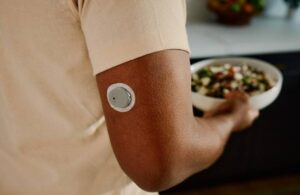
Stelo became the first CGM to receive over-the-counter clearance from the FDA less than two months later in March. Approval took just 75 days.
However, in the build-up to Stelo’s approval, there were questions about reimbursement, the impact of GLP-1 drugs and other causes for concern.
“It made us all uncomfortable,” Sayer said. “In all fairness, it made our whole entire company uncomfortable. There were many pro and con debates about this.”
Sayer sat down with Drug Delivery Business News at ADA to talk through Stelo, it’s upcoming launch, and more news at Dexcom, including new G7 features and automated insulin delivery integrations.
Tandem Diabetes Care says Mobi pump improves quality of life
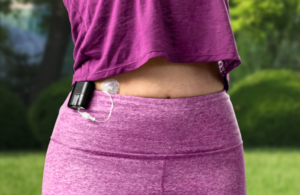
The system pairs with both the Dexcom G6 and G7 CGMs, offering multiple options to patients. Tandem also plans to integrate Mobi (and its t:slim X2 pump) with the Abbott FreeStyle Libre 3 in the future.
Mobi’s size enables users to wear it almost anywhere with greater discretion, comfort and flexibility. Control-IQ technology, meanwhile, predicts and helps prevent highs and lows.
At ADA, Tandem shared a survey on user satisfaction and wearability, finding that 86% of patients reported that they were satisfied or very satisfied with Mobi regardless of prior therapy and agreed that Mobi helps improve their quality of life.
“These real-world user insights provide evidence that we are furthering our mission to improve the lives of people with diabetes by demonstrating that Tandem Mobi not only meets, but exceeds user expectations,” said Dr. Jordan Pinsker, chief medical officer at Tandem Diabetes Care. “We are proud to share these results at ADA and will continue to innovate to provide the diabetes community with choice and improved quality of life.”
Embecta data shows the potential of insulin patch pumps for type 2 diabetes
Embecta presented two abstracts at the American Diabetes Association Scientific Sessions in Orlando, Florida. The BD Diabetes spinoff’s data pointed to the potential for adults with type 2 diabetes to better manage insulin delivery through a patch pump with a larger, 300-unit insulin reservoir.
Embecta is developing a patch pump with a 300-unit reservoir for the type 2 population. This open-loop insulin patch pump technology remains under FDA review. Such technology could offer longer wear times and fewer disposable patches over time.
Investigators analyzed adults with type 2 diabetes on multiple daily injections (MDI). Investigators estimated the number for whom 200-unit and 300-unit insulin reservoirs would be sufficient for different wear times, as well as the number of patch pumps needed over time.
They concluded that a 300-unit reservoir would meet the needs of 64% of adults with type 2 diabetes for 72-hour wear. Meanwhile, a 200-unit reservoir would meet the needs of just 38% of the same population.
MannKind’s inhaled insulin meets primary efficacy endpoint in study

The Danbury, Connecticut-based company designed Afrezza, a rapid-acting inhaled human insulin, to improve glycemic control in adults with type 1 diabetes mellitus. INHALE-3 evaluated Afrezza against usual care — defined as multiple daily injections (MDI), an automated insulin delivery system, (AID) or a pump without automation. It utilized a higher initial conversion dose from mealtime injectable insulin to inhaled insulin.
MannKind’s study met its primary efficacy endpoint of a non-inferior change in HbA1c between baseline and week 17 compared to the usual care group.
“INHALE-3 adds to the body of evidence that when combined with basal insulin, inhaled insulin’s effect on HbA1c/TIR is similar to that of the usual care (inclusive of AID pumps) with no new safety concerns,” said Dr. Kevin Kaiserman, SVP, clinical development and medical affairs for MannKind Corporation. “Our data continues to show the importance of Afrezza as a safe and effective tool for managing diabetes.”

